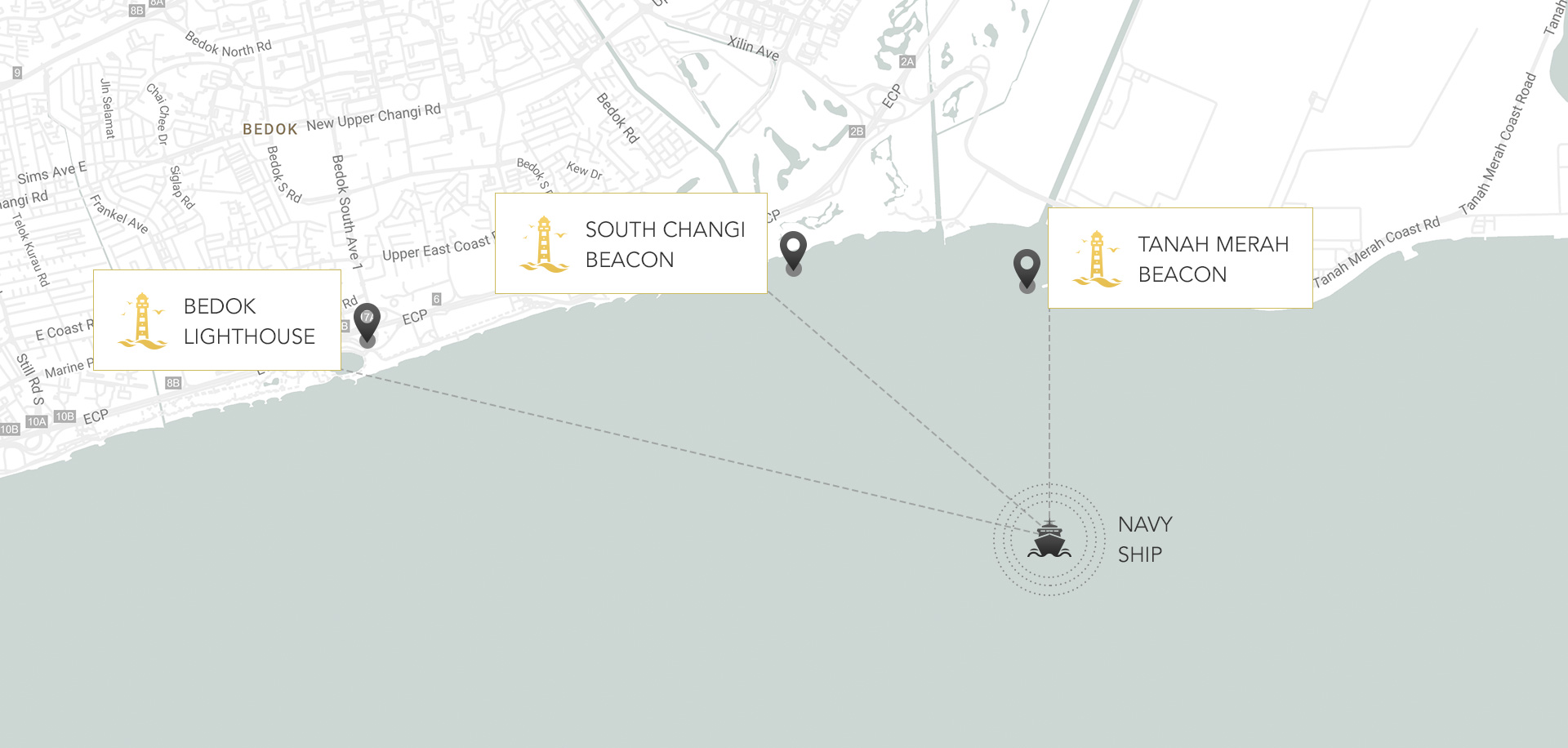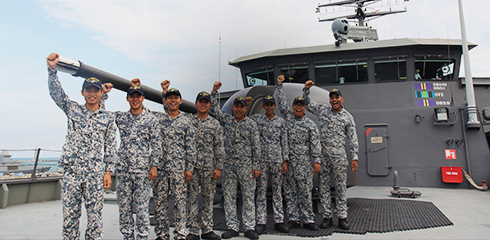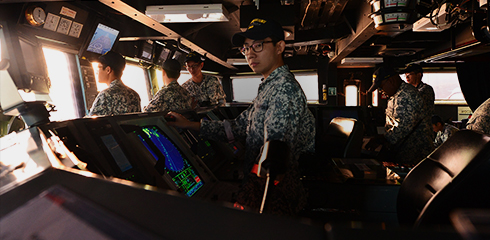Take a tour of our waters and discover the significance of these four fixing marks to our Republic of Singapore Navy sailors.
Republic of Singapore Navy (RSN) personnel see them when they sail out of base or return home from sailing, and rely on them to confirm a ship’s coordinates. But these fixing marks used by sailors in Singapore’s waters are more than just navigational tools. They are symbols of the maritime nation they are defending every day.
From an iconic skyscraper to a fire-breathing chimney, these landmarks represent the different aspects of life on Singapore — residential, commercial and industrial — near the coast. Singapore is after all, an island nation. Our “maritime-ness” can be found in nearly every aspect of life in our nation, especially in these fixing marks used to guide our sailors home.
To our RSN sailors who use these fixing marks each and every day, they are important tools. But they are also one of the many intimate reminders of what is at stake: the island home that the Navy protects, and why our sailors must go out to sea.
What is a Fixing Mark?
A prominent feature used for navigation at sea, in addition to GPS navigation. It allows ships to determine their position as they are approaching the coast. A sailor takes the bearing of a fixing mark and cross-checks it with two more fixing marks, forming three lines to the ship. The intersection of the lines and the angles to each fixing mark from the intersection let the sailor calculate the coordinates of the ship.
1. Bedok Lighthouse
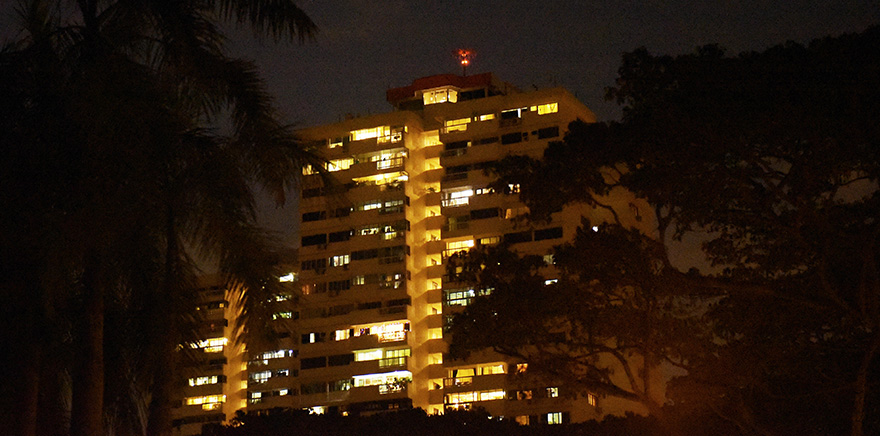
Bedok Lighthouse - 1°18.544’N 103°55.965’E
Residents on the top floors of a 25-storey block at Lagoon View condominium enjoy an unobstructed view of the sea off the eastern coast. On a good day, they can observe ships as far as Batam island in Indonesia. Little do they know that sailors have been returning their gaze every day for nearly four decades.
The reason? Atop the housing block is a lighthouse that doubles up as a fixing mark for maritime navigation. For the personnel of the RSN, Bedok Lighthouse is one of the easiest fixing marks to spot, because of the bright red rectangle painted on the roof of the building. At night, RSN personnel identify it by its white light that flashes every five seconds.
The residential building doesn’t just serve to guide our sailors home. Every time they look towards the lighthouse, they remember why they go out to sea — to defend the everyday peace of fellow Singaporeans.
2. Swissotel the Stamford

Swisshotel the Stamford - 1.293544°N 103.85349°E
Housing a remarkable 1,261 guest rooms and suites, this five-star hotel rises to a commanding height — 226 metres above Singapore’s historical district. Out at sea, the skyscraper only appears to be a few centimetres tall, but its shape is unmistakable. RSN personnel commonly refer to it as the badminton shuttlecock container.
The hotel is a key part of Singapore’s city silhouette, in the heart of the central business district. As Singapore’s maritime industry contributes to seven percent of its GDP, the hotel, part of the skyline of our financial district, is a powerful reminder of how the sea is important to Singapore. It also reminds us why our sailors go out to sea: to protect what Singapore has built.
3. Sentosa Sky Tower

Sentosa Sky Tower - 1.2550° N, 103.8176° E
On the resort island of Sentosa, there are a number of military installations, such as radar towers and radio masts, that can be used as fixing marks. Savvy sailors, however, prefer to point their gyroscopes toward the unmistakeable 110-metre Sentosa Sky Tower, a tourist attraction that comes with a rotating observation cabin.
Welcoming over 19 million visitors a year, Sentosa has changed drastically from its past as a fortress for the British military. But the Navy continues to watch over Sentosa and the rest of Singapore to protect our maritime nation’s interests.
4. Pulau Ular
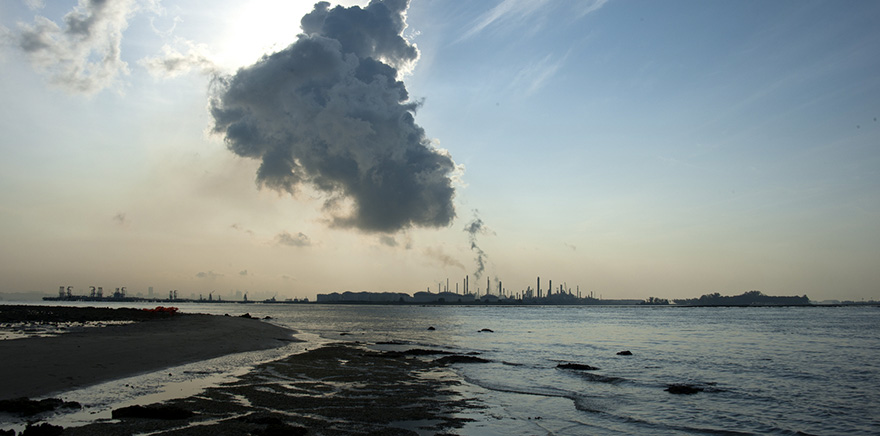
Pulau Ular - 1.2339° N, 103.7571° E
Echoing our national colours in bold red and white, the flare on Pulau Ular is part of the Shell Eastern Petrochemicals Complex. It is also one of the largest petrochemical production and export complexes in the world.
The Ular flare, as RSN sailors colloquially refer to it, emits spectacular flames from time to time as part of Shell’s operations. Sailing past the Ular flare, RSN sailors are often reminded of the sheer scale of this offshore industry. After all, Singapore’s energy and chemicals industry ranks among the top 10 globally. In fact, the oil re¬fining section produced 1.3 million barrels per day in 2016.
In the end, these landmarks add up to something special to any RSN crew out at sea. Day after day, fixing marks are visual reminders of the Singapore we’re protecting and what’s at stake.


